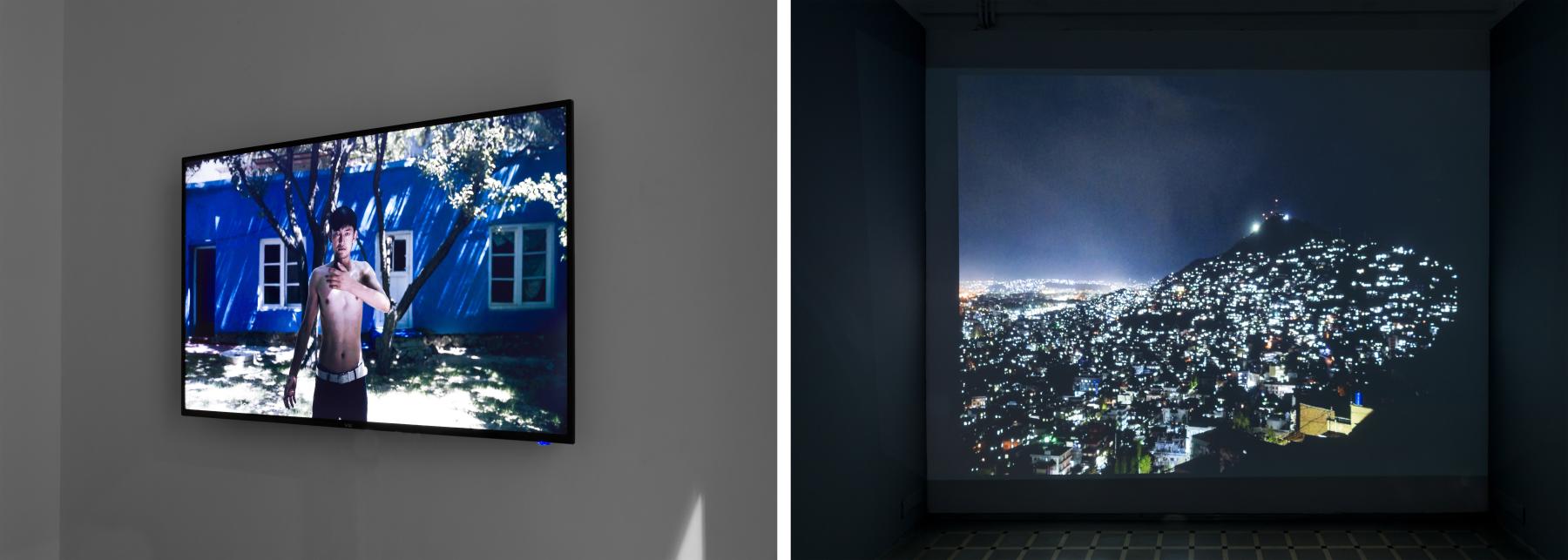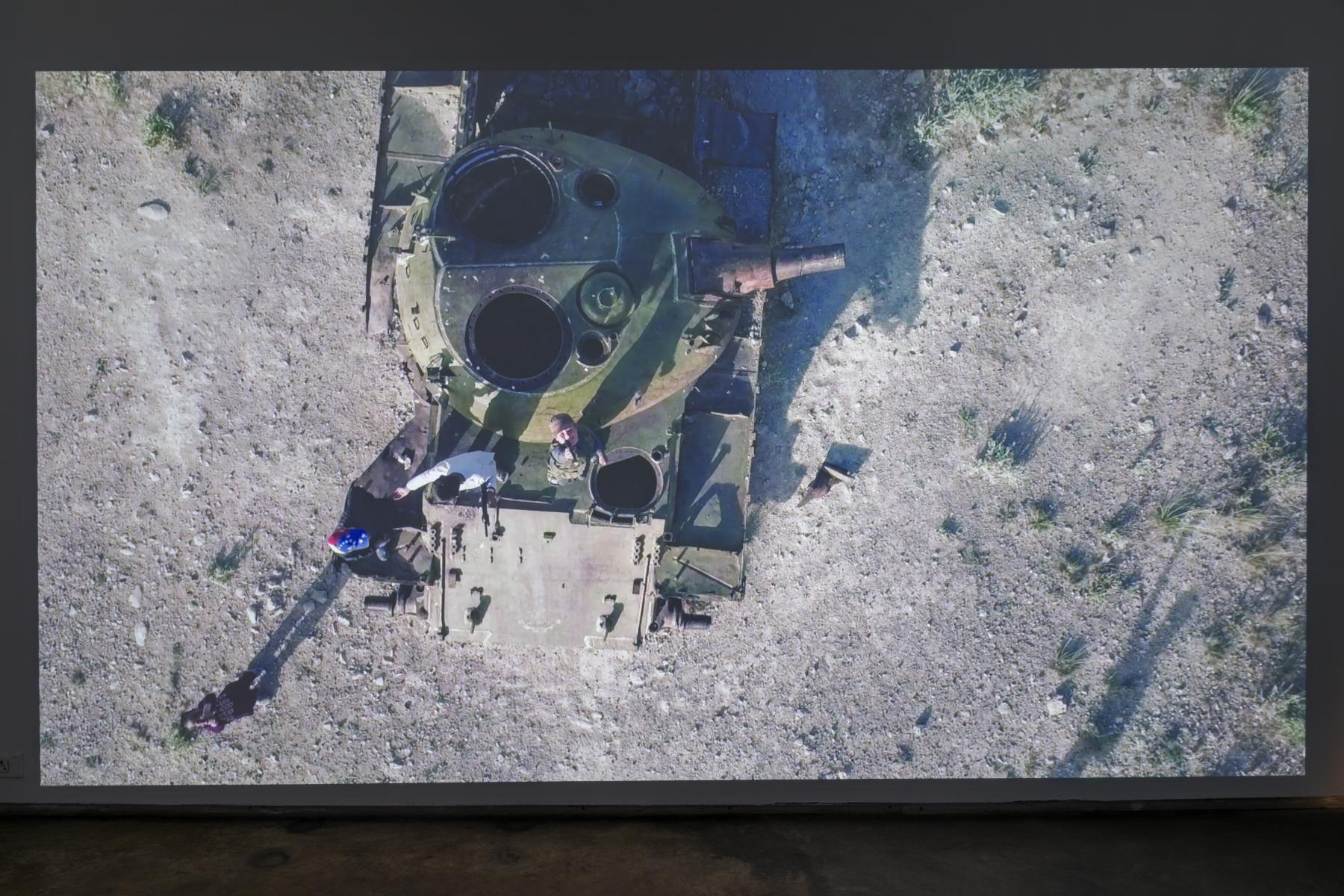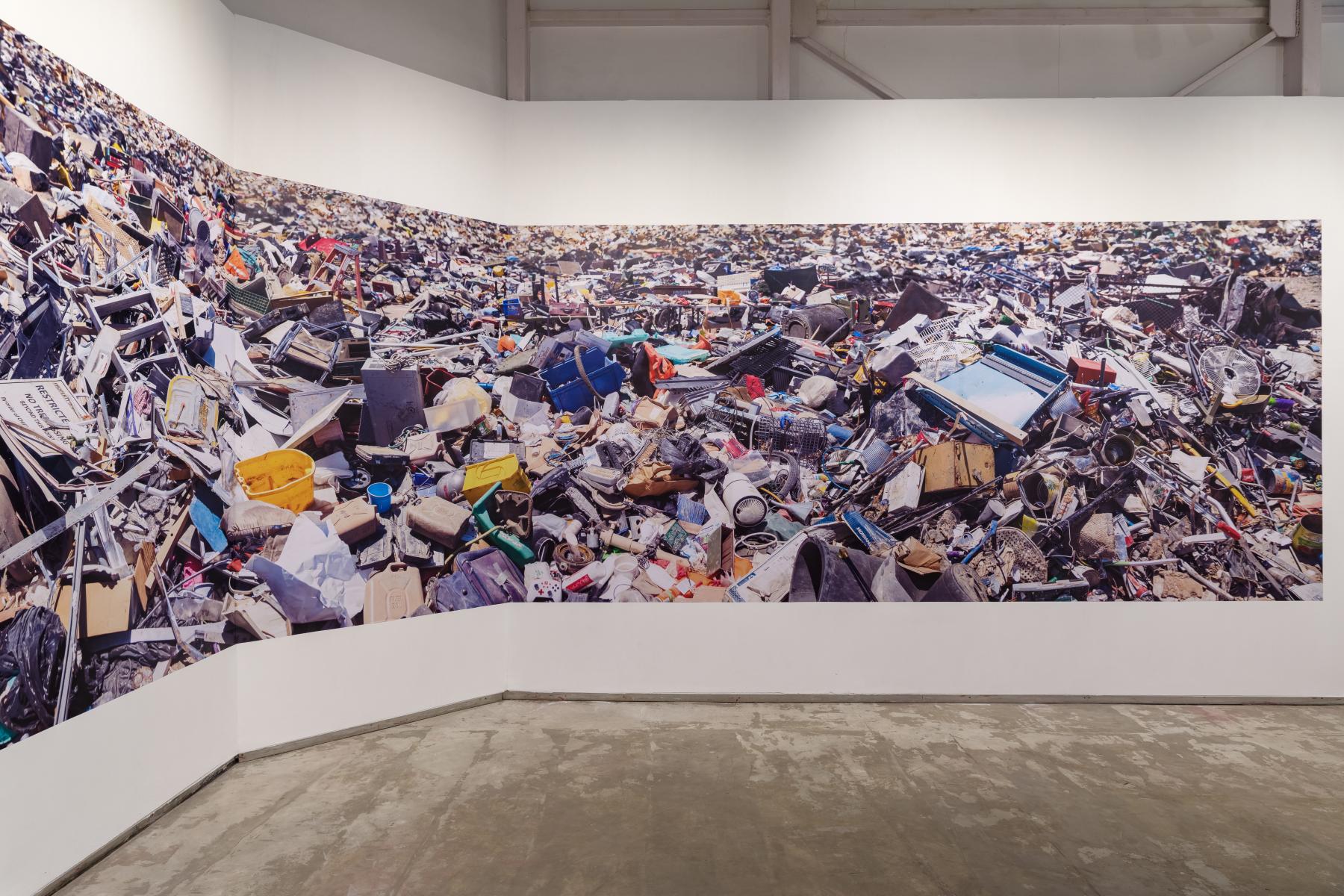The Medium is the Messiah: Aziz Hazara’s No Starting Point for Revolution
Amidst headlines of ever-increasing Covid-19 numbers in May 2021, there was a slowly brimming story about the Taliban offensive moving closer to the power centre of Kabul in Afghanistan. As a mythical El Dorado, Afghanistan’s position at the junction connecting Asia to Europe has been a crucial chip for foreign governments and internal groups for more than three decades now. A coup in 1978, followed by a Soviet invasion soon afterwards and infighting amongst warring clans paved the way for a military invasion by the USA in 2001. Twenty years later, the Taliban seized control in August 2021, leading to the deaths of many as well as the massive destruction of property, exorbitant debt and vast-scale human migration.
As one walks into No Starting Point for Revolution at Experimenter Ballygunge Place, Aziz Hazara’s first solo show in the country, this context of a land and its people constantly in a state of conflict situates the viewer within the artist’s visual landscape. In a war zone, news percolates from those in power and is often a biased narrative. Favouring lived experience over headline-making minutes, Hazara’s interpretation of the reality lends a newfound perspective to understanding the complex history of the land. With archival prints, aerial videography and the tactical use of sound and installation spread out expansively, Hazara presents a visual and aural experience of the everyday in war-torn Afghanistan.
.png)
The exhibition presents the artist’s works over the years, beginning with Camouflage (2016), a set of grainy, green-tinted dystopian images of citizens caught unaware by an all-seeing eye. The political thrust of the work is evident in its form—Hazara took the photographs using a pair of military-grade night-vision goggles, popularly used by foreign military and paramilitary forces in Afghanistan. The effect of decades of life in the war zone is visible in the subjects’ interaction with the camera—a dismal fear, followed by evident surprise at having identified a friend from the enemy.

Two separate video installations titled Takbir (which describes the call of Allahu Akbar! or God is great), further develop Hazara’s investigation into structures of power, tools of contemporary warfare and the fate of ordinary people at the centre of conflict. Entering the dark room, one is caught face-to-face with an individual in Takbir (2021),whose rhythmic movements and stoic gaze are juxtaposed against a sonic landscape. The viewer’s gaze then shifts to the panoramic dimensions of the cityscape in Takbir (2022), amidst mayhem as cacophonous calls for Takbir ring out in the middle of the American military evacuation in 2021. Aerial shots of the night sky give way to dizzying motion—of city lights and the dark night, sonic chaos and the silence that punctuates it from time to time.

Sound plays a critical role in Hazara’s multi-dimensional work. In Eyes in the Sky (2020), the viewer embodies the eye of a drone spying on the rugged landscape as it unfolds. Panning to a lower level, it captures children at play on the site of abandoned war debris, wielding guns. As the drone settles over this site, the children look directly upward and point their guns, almost imitating the action of shooting the enemy. Combined with the ambient sounds of drones, helicopters and the call to prayer, the work delivers a jarring impact. As the sounds begin to fade, the children lay down their guns and act as if they have just been shot. The viewer is cognizant that these could be children wielding toy guns anywhere in the world, except this is a conflict zone where children have known war as their reality.

The panoramic print I look for you like a drone, my love (2021), situated towards the end of the exhibition, leaves one ruminating on the futile nature of war. The debris peppered across the print stands as a visual reminder of the wreckage left behind by decades of strife. From colourful plastic items of daily use to e-waste from technological tools, from wooden chairs to army suits, the dumping ground becomes an archive of the scale of devastation. This debris, which is hard to get rid of, symbolises the emotional trauma that still haunts the citizens of the land.
Documentary works that shed light on the effects of war arguably create a distance between the subject and the voyeur. Witnessing Hazara’s oeuvre 2288 kilometres away from where the story originates is, however, an experience unlike any other. Inside the white-cube space, the viewer is equally the all-seeing eye, part of the group that calls for Takbir, surveyor of the land down below and the one complicit in the affairs of the state.
Hazara’s practice succinctly recreates the violence of war and conflict in his native Afghanistan, using the very technologies that he critiques through his work. Military night-vision goggles, drones, aerial photography and videography, as well as the calculated use of silence and sound, light and darkness, all come together to address substantial themes of memory, surveillance, archives, the panoptic gaze and, above all, the politics of representation. The mediatised portrayal presents the invasive nature of surveillance tools, while the localised focus adds to the many-layered history of the country. It is through such a tapestry of archival soundscapes, documentary footage and scenes recreated from the artist’s imagination that Hazara voices the larger questions left unanswered by media polls, featured stories and expert takes on the land and its people.
To read more about Aziz Hazara’s work, read Sukanya Baskar’s piece on No End in Sight (2020) and her conversation with Hazara and curator Muheb Esmat.
To learn more about image-making practices in Afghanistan, revisit Najrin Islam’s conversation with Mariam Ghani and a reflection on Roya Sadat’s feminist lens.
All images courtesy of the artist and Experimenter.




